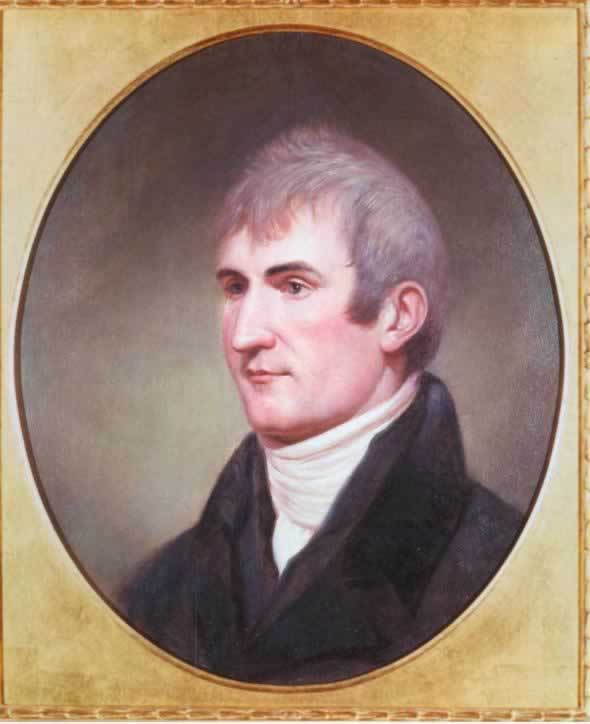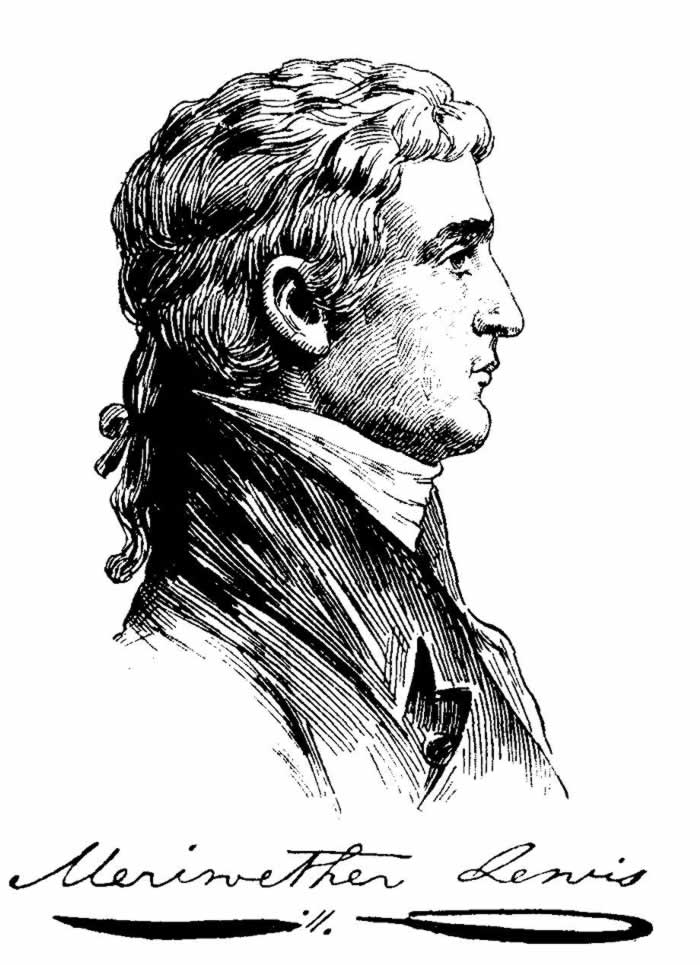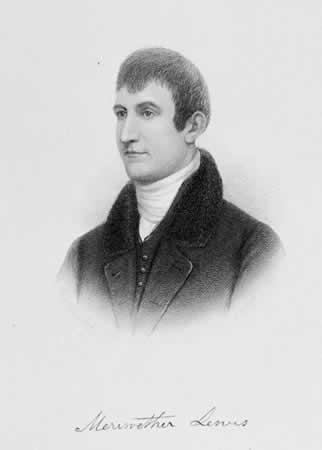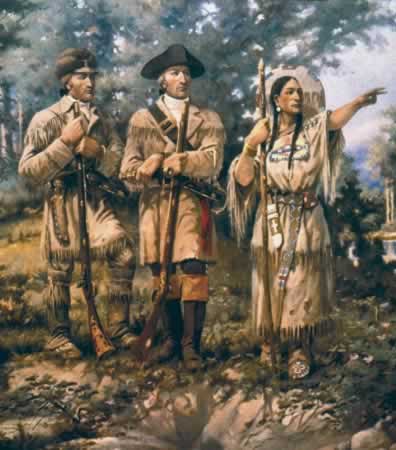Think that you may own a portrait of Meriwether Lewis? We authenticate, appraise and issue Certificates of Authenticity (COA) for all portraits of Meriwether Lewis.

Meriwether Lewis by Charles Willson Peale 1807
Meriwether Lewis was an American explorer, soldier, and public administrator, best known for his role as the leader of the Corps of Discovery, whose mission was to explore the territory of the Louisiana Purchase.
Lewis was born near Charlottesville, Virginia, to John Lewis, and was of Welsh ancestry. He moved with his family to Georgia when he was ten. At thirteen, he was sent back to Virginia for education by private tutors. One of these was Parson Matthew Maury, an uncle of Matthew Fontaine Maury. Parson Maury was a son of James Maury who was Thomas Jefferson's teacher for two years. In the 1790s, Lewis graduated from Liberty Hall Academy in Lexington, Virginia (now Washington and Lee University), joined the Virginia militia, and in 1794 was sent as part of a detachment involved in putting down the Whiskey Rebellion. In 1795, he joined the regular Army, in which he served until 1801, at one point in the detachment of his William Clark. He achieved the rank of Captain.

Meriwether Lewis by Charles Saint-Memin, 1803

Meriwether Lewis, Profile Sketch

Meriwether Lewis, Engravings, Artist Unknown, based on the portrait by Charles Willson Peale
He was appointed private secretary to President Thomas Jefferson in 1801. Originally, he was to provide information on the politics of the United States Army, which had seen an influx of Federalist officers as a result of John Adams's "midnight appointments." He later became intimately involved in the planning of the expedition and was sent by Jefferson to Philadelphia, Pennsylvania, for instruction in cartography and other skills necessary for making scientific observations. Lewis departed Pittsburgh for St. Louis--the capital of the new Louisiana Territory--via the Ohio River in the summer of 1803, gathering supplies, equipment, and personnel along the way.
Between 1804 and 1806, the Corps of Discovery explored thousands of miles of the Missouri and Columbia River watersheds, searching for an all-water route to the Pacific Ocean. Sharing leadership responsibilities with William Clark, Lewis led the expedition safely across the Rocky Mountains to the Pacific and back, with the loss of a single man--who died of apparent appendicitis. In the course of the journey, Lewis observed,
collected, and described hundreds of plant and animal species previously unknown to science. The expedition was the first point of Euro-American contact for several Native American tribes; through translators and sign language, Lewis conducted rudimentary ethnographic studies of the peoples he encountered, even as he laid the groundwork for a trade economy to ensure American hegemony over its vast new interior territory.
Lewis, Clark and Sacagawea
On August 11, 1806, near the end of the expedition, Lewis was shot in the hip by Pierre Cruzatte, a near-blind man under his command. His wound hampered him for the rest of the journey.
After returning from the expedition, Lewis received a reward of 1,500 acres (6 km²) of land. In 1807, Jefferson appointed him governor of the Louisiana Territory; he settled in St. Louis. Lewis was a poor administrator, often quarreling with local political leaders and failing to keep in touch with his superiors in Washington.
He was a member of the Freemasons. On August 2, 1808, Lewis and several of his acquaintances submitted a petition to the Grand Lodge of Pennsylvania in which they requested a dispensation to establish a lodge in St. Louis. Lewis was nominated and recommended to serve as the first Master of the proposed Lodge, which was warranted as Lodge No. 111 on September 16, 1808. Here his heavy drinking persisted.
Lewis died under mysterious circumstances of two gunshot wounds in 1809 at a tavern called Grinder's Stand, about 70 miles (110 km) from Nashville, Tennessee, on the Natchez Trace, while in route to Washington to answer complaints about his actions as governor. Whether Lewis committed suicide or was murdered remains a mystery to this day. Jefferson believed the former, while his family continually maintained the latter. The explorer was buried not far from where he died. He is honored today by a memorial along the Natchez Trace Parkway.
While there are few paintings of Lewis painted during his lifetime in existence today (partially because he died at a young age), artists are still recreating his likeness. There may be many unknown paintings of Lewis, unauthenticated and otherwise unknown, in the back of closets or stored away in attics or basements.

Meriwether Lewis by Michael J. Deas, 2004
Still wondering about a portrait in your family collection? Contact us... it could be a portrait of explorer Meriwether Lewis.
